Are you looking for an easy-to-care-for indoor plant? Low-maintenance plants are beneficial and require little energy and resources to thrive. It’s their ability to thrive in fair conditions that make them unique. If you’re looking for plants like these, then don’t fret!
Indoor plants that require little water are the perfect way to add a touch of greenery to your home without having to worry about watering them every day. These plants are perfect for busy people who want to enjoy the benefits of having plants in their home without all the work.
In this blog post, we’ll be sharing the best indoor plants that require little water and maintenance. From succulents to snake plants, you’re sure to find a plant that’s perfect for your home. So what are you waiting for? Keep reading to learn more!

The Best Indoor Plants That Require Little Water And Maintenance
1. Aloe Vera
This is a succulent plant, which means it stores water in its leaves. It is a low-maintenance plant that does not require much water or sunlight to grow. When watering your aloe vera plant, make sure the soil is dry before watering it again. It is best to water it about once a week.
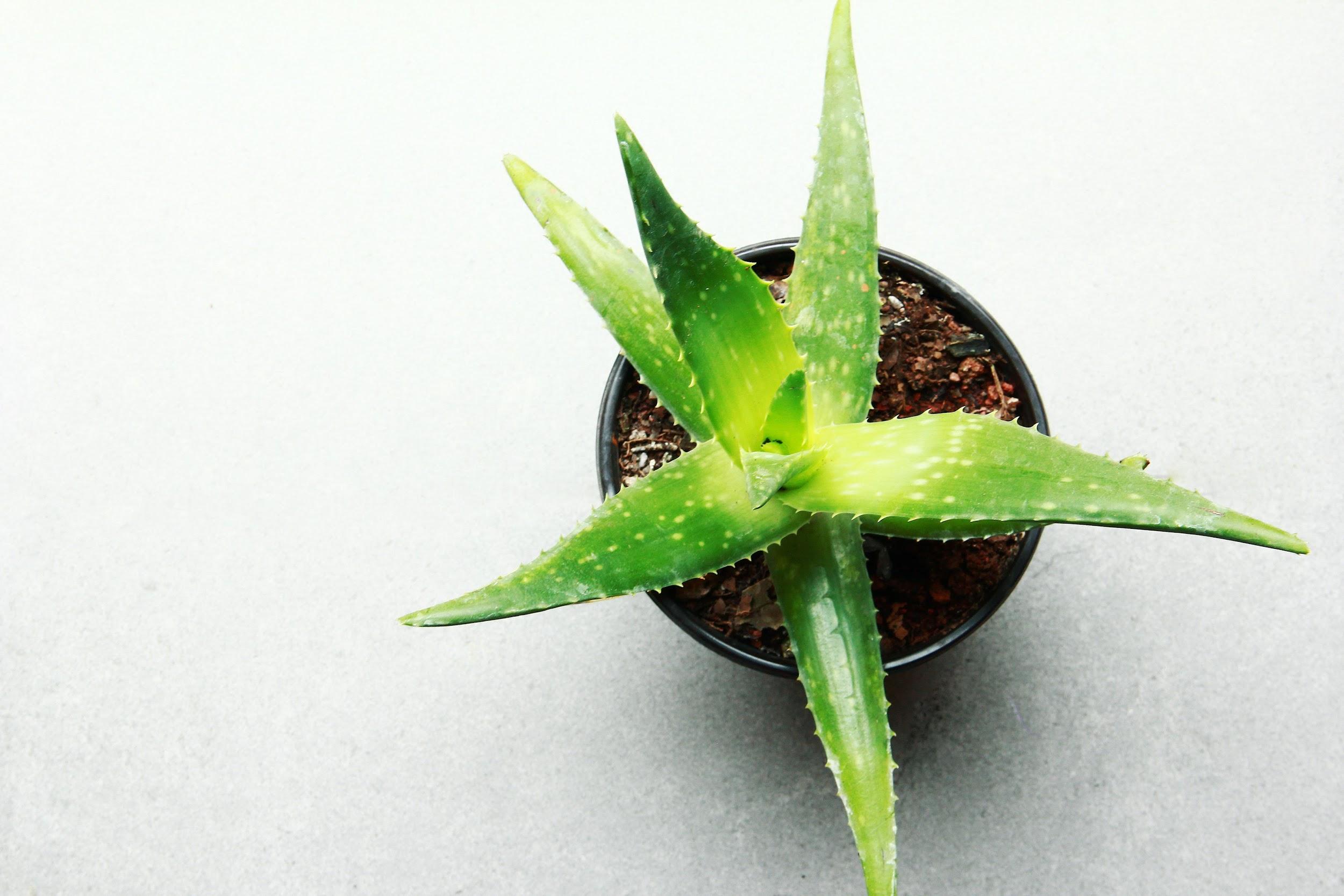
Credit: Pixabay
Aloe vera plants prefer bright, indirect sunlight. You can place it near a window where it will get plenty of light without being in direct sunlight.
2. Cactus
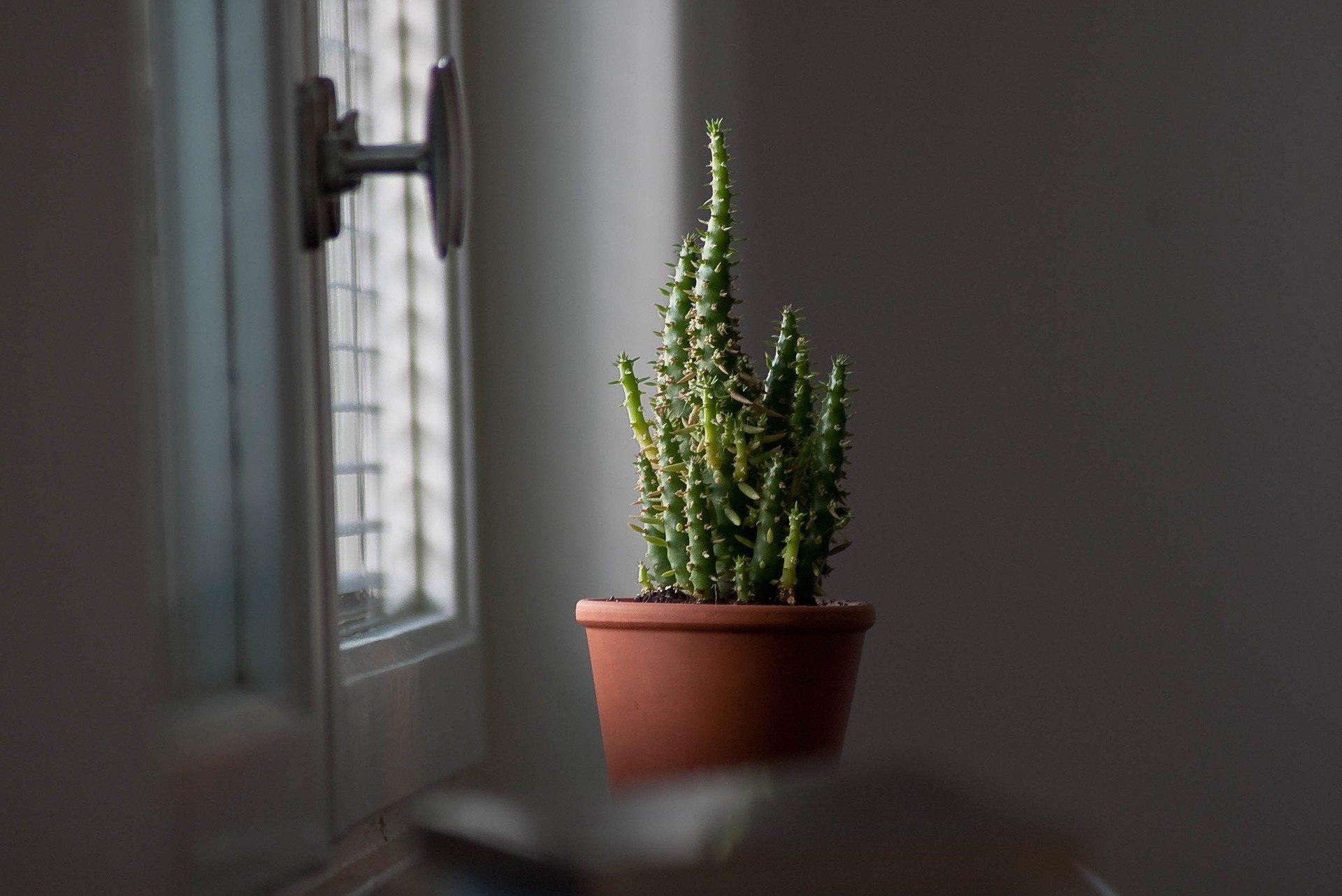
Credit: Pixabay
Cacti are also succulent plants, so they store water in their leaves. They are very low maintenance and do not require much water or sunlight to grow. When watering your cactus, make sure the soil is dry before watering it again. It is best to water it about once a week.
Cacti prefer bright, indirect sunlight. You can place it near a window where it will get plenty of light without being in direct sunlight.
3. Snake Plant
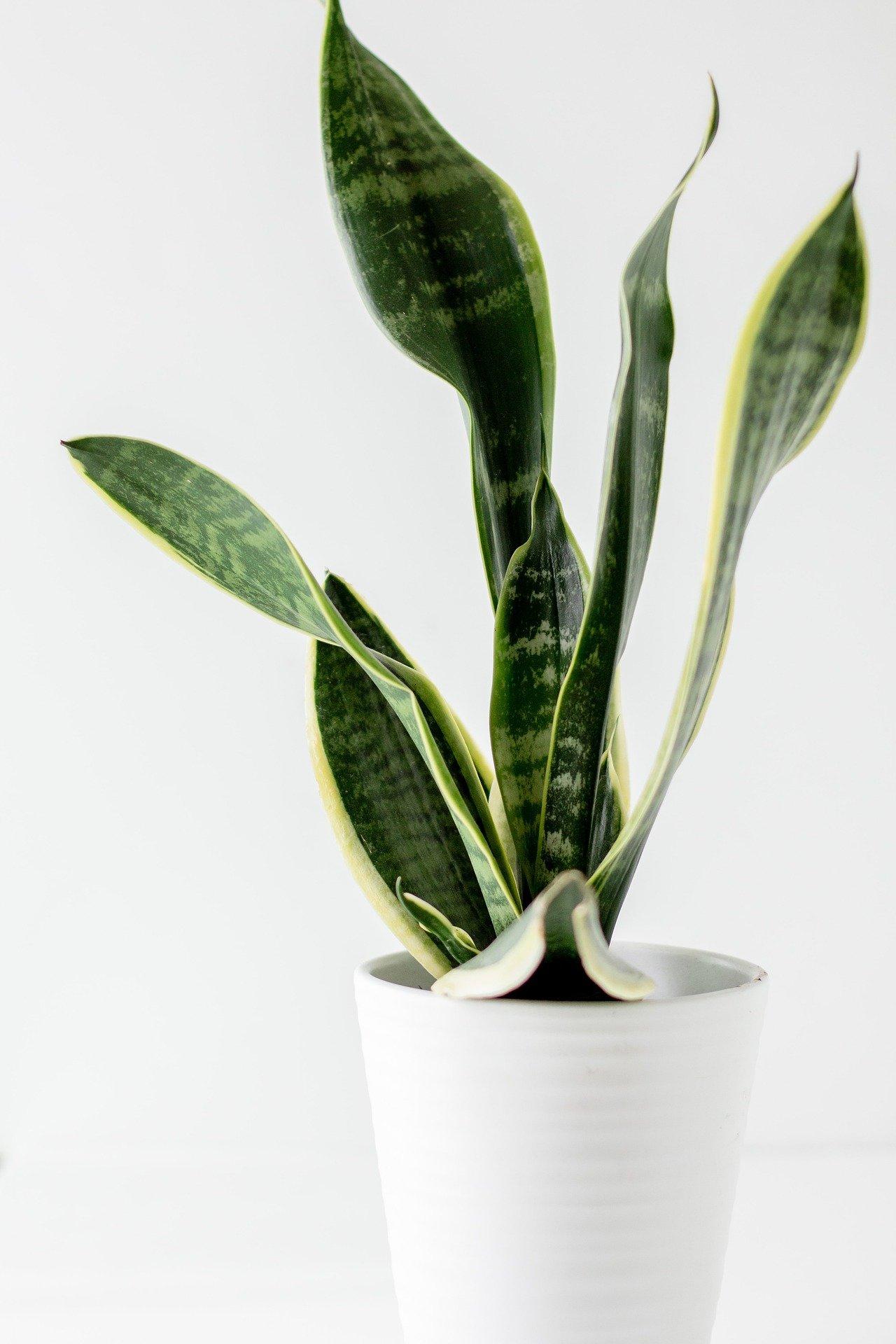
Credit: Pixabay
Snake plants are low-maintenance plants that do not require much water or sunlight to grow. When watering your snake plant, make sure the soil is dry before watering it again. It is best to water it about once a week. Snake plants prefer bright, indirect sunlight. You can place it near a window where it will get plenty of light without being in direct sunlight.
4. Spider Plant
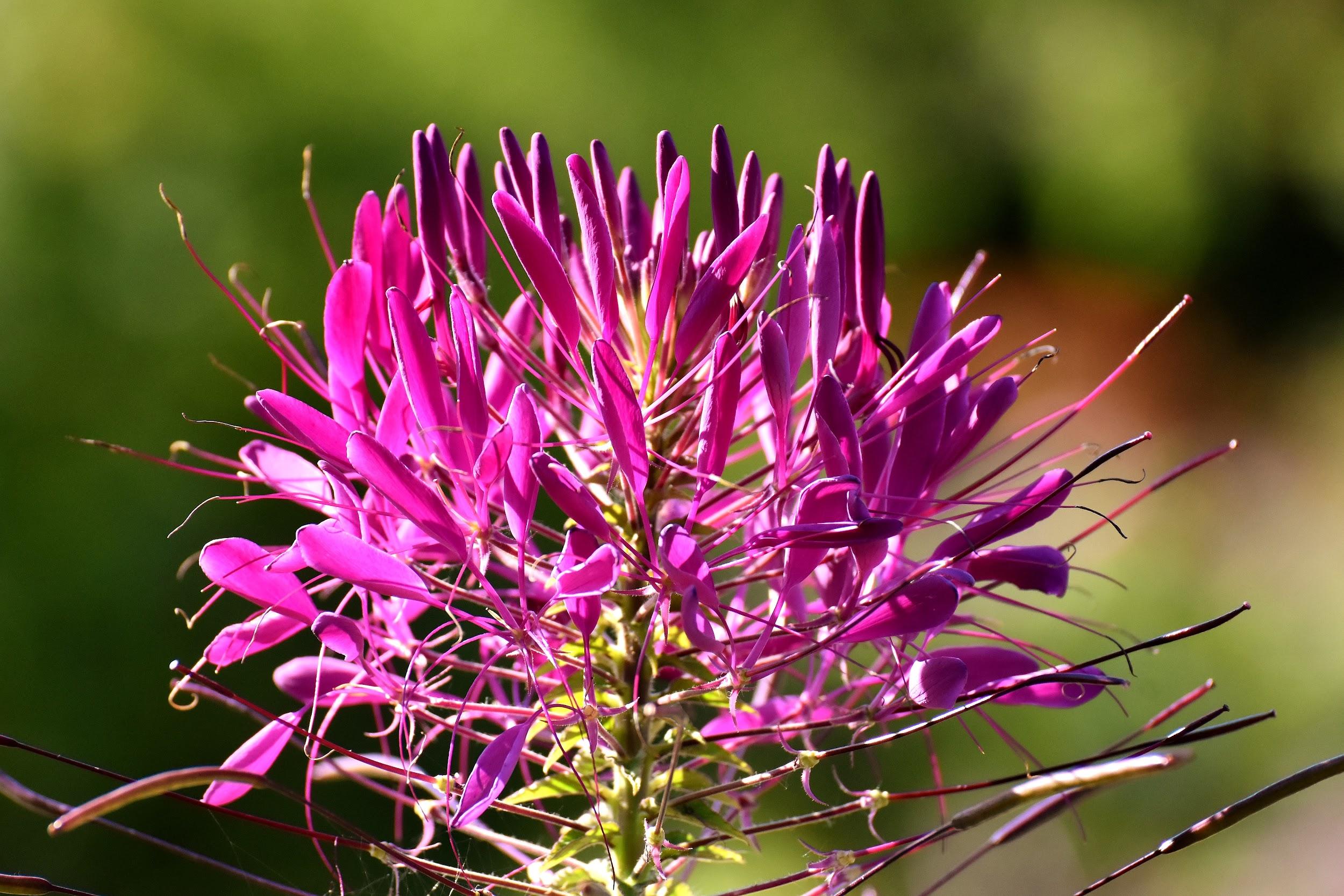
Credit: Pixabay
Spider plants are low-maintenance plants that do not require much water or sunlight to grow. When watering your spider plant, make sure the soil is dry before watering it again.
It is best to water it about once a week. Spider plants prefer bright, indirect sunlight. You can place it near a window where it will get plenty of light without being in direct sunlight.
5. Philodendron
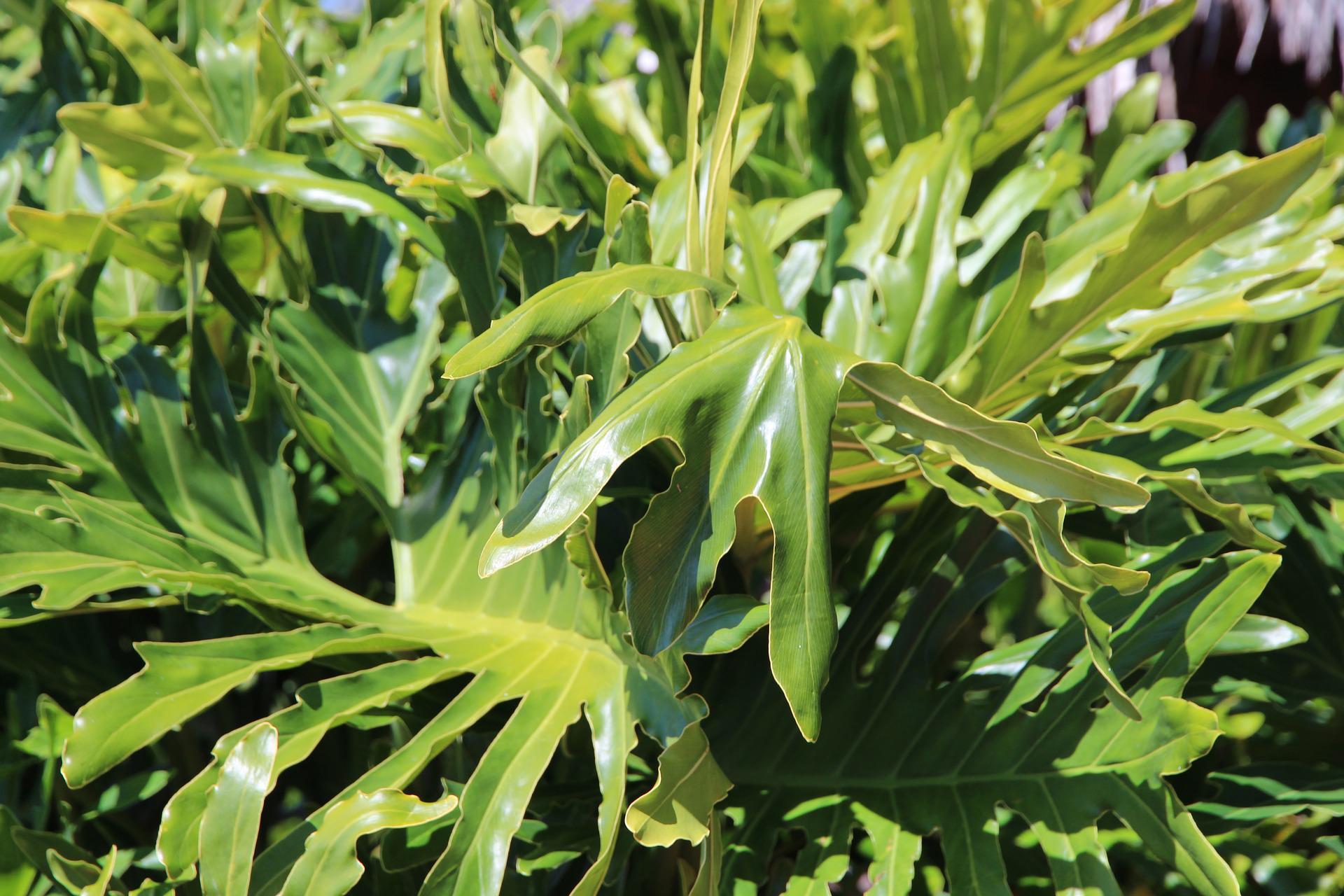
Credit: Pixabay
Philodendrons are low-maintenance plants that do not require much water or sunlight to grow. When watering your philodendron, make sure the soil is dry before watering it again. It is best to water it about once a week.
Philodendrons prefer bright, indirect sunlight. You can place it near a window where it will get plenty of light without being in direct sunlight.
The Benefits Of Indoor Plants
Indoor plants have many benefits. They can purify the air, increase humidity, and improve your mental health.
- Air Purification
One of the benefits of indoor plants is that they can purify the air. Plants take in carbon dioxide and release oxygen. They also remove toxins from the air, like formaldehyde and benzene.
- Humidity
Another benefit of indoor plants is that they can increase the humidity in a room. This is especially helpful during the winter when the air is dry. Plants release water vapor, which increases the humidity in the air.
- Mental Health
Indoor plants can also improve your mental health. Studies have shown that plants can reduce stress and anxiety. They can also improve your mood and cognitive function.
The Different Types Of Indoor Plants
Indoor plants are great for purifying the air in your home and adding a touch of nature. But not all indoor plants are created equal. Some require more water and maintenance than others.
Here are some different types of indoor plants that require little water and maintenance:
1. Succulents
Succulents are a type of plant that stores water in its leaves. This makes them perfect for indoor conditions where there is little natural light or water. Be sure to plant your succulent in a well-drained pot to prevent root rot.
2. Cacti
Cacti are another type of plant that does not require a lot of water. They are often mistaken for succulents, but cacti have different care requirements. Cacti need full sun and well-drained soil. Be sure to water your cactus only when the soil is dry to the touch.
3. Air plants
Air plants are a type of plant that gets its nutrients from the air. They do not require any soil and can be mounted on a piece of Driftwood or hung from a glass globe. Water your air plant once a week by misting it with water.
4. Snake plants
Snake plants are a type of plant that is very tolerant of neglect. They can go weeks without water and can even survive in low-light conditions. Be sure to plant your snake plant in well-drained soil and water it only when the soil is dry to the touch.
5. Spider plants
Spider plants are a type of plant that is very easy to care for. They are tolerant of a wide range of conditions and can even survive in low-light conditions. Be sure to water your spider plant when the soil is dry to the touch.
These are just a few of the different types of indoor plants that require little water and maintenance. With a little research, you can find the perfect plant for your home.
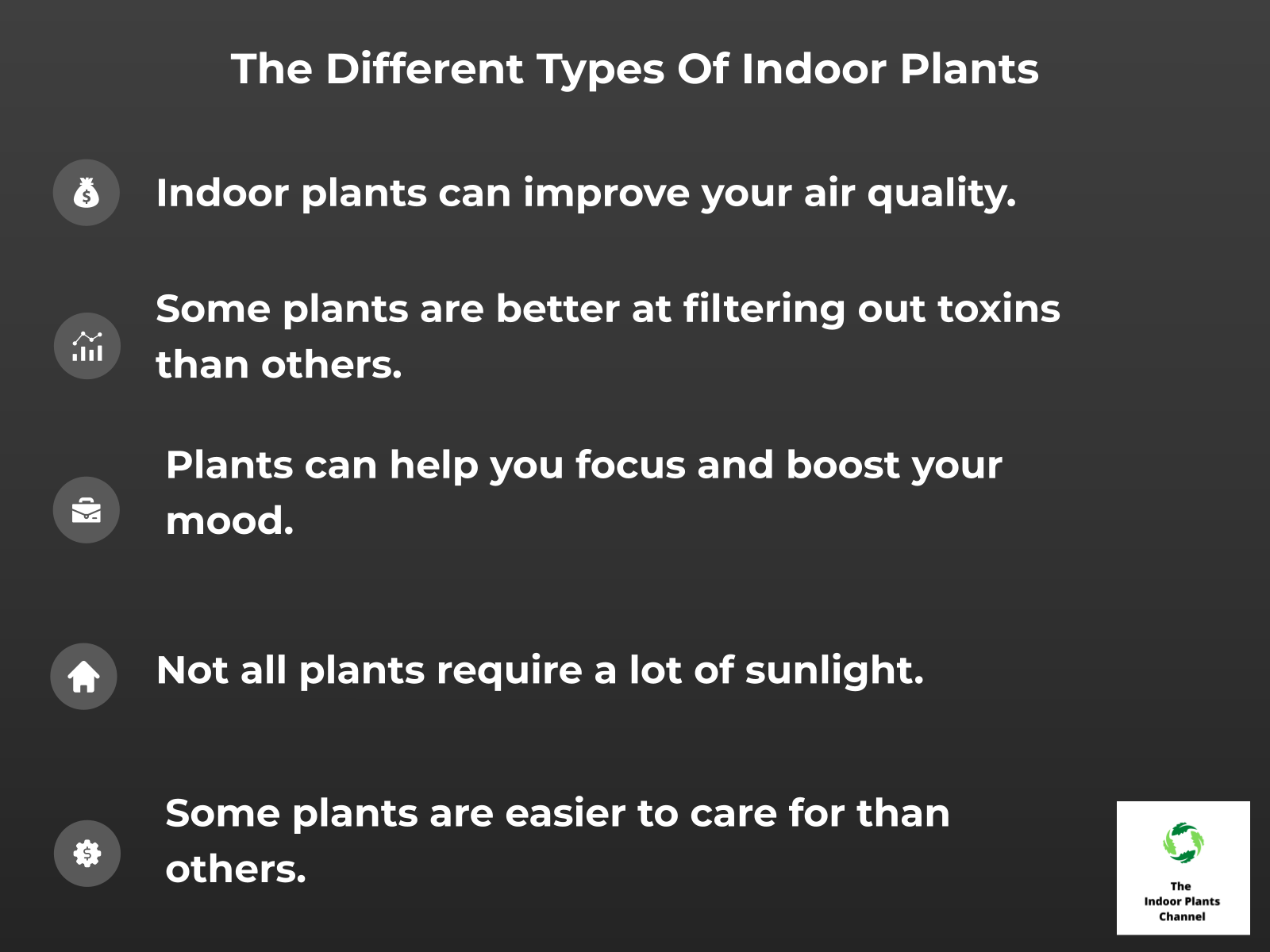
The Best Places To Buy Indoor Plants
There are a few things to consider when purchasing indoor plants, such as the type of plant, the size, and the amount of light and water it needs. Here are some of the best places to buy indoor plants:
- Home Depot
Home Depot is a great place to buy indoor plants because they have a wide selection and they offer a variety of prices. They also have a return policy, so if a plant does not do well, you can return it.
- Lowe’s
Lowe’s also has a wide selection of indoor plants and offers a variety of prices. They also have a return policy, so if a plant does not do well, you can return it.
- IKEA
IKEA is a great place to buy indoor plants because they have a wide selection of plants that are affordable. They also have a return policy, so if a plant does not do well, you can return it.
- Amazon
Amazon is a great place to buy indoor plants because they have a wide selection and they offer a variety of prices. They also have a return policy, so if a plant does not do well, you can return it.
- Local nurseries
Local nurseries are a great place to buy indoor plants because they have a wide selection and they offer a variety of prices. They also have a return policy, so if a plant does not do well, you can return it.
The Care And Maintenance Of Indoor Plants
Indoor plants are a great way to add some life to your home without having to worry about watering them or keeping them alive in extreme weather conditions. However, even indoor plants need a little bit of care and attention in order to stay healthy and thrive. Here are a few tips on how to take care of your indoor plants:
- Water your plants regularly.
Indoor plants should be watered about once a week, or when the soil feels dry to the touch. Be sure to not over-water your plants, as this can lead to root rot and other problems.
- Give your plants some light.
Most indoor plants need at least four hours of indirect sunlight each day in order to stay healthy. If you don’t have a spot in your home that gets enough light, you can purchase grow lights to give your plants the light they need.
- Fertilize your plants.
Indoor plants should be fertilized about once a month with a water-soluble fertilizer. Be sure to follow the directions on the fertilizer package, as too much fertilizer can burn your plants’ roots.
- Prune your plants.
Just like outdoor plants, indoor plants will benefit from a little bit of pruning. This will help to encourage new growth and keep your plants looking their best.
The Different Types Of Watering Systems For Indoor Plants
Indoor plants need to be watered regularly, but not all watering systems are created equal. Here are some of the most popular types of indoor plant watering systems to help you choose the best one for your plants:
1. Manual watering
This is the most common type of watering system for indoor plants. You simply water your plants by hand, using a watering can or hose. This is a great option if you have a small number of plants, or if you want to water your plants more frequently.
2. Automatic watering
This type of watering system is great for larger collections of plants, or for plants that need to be watered less often. There are a variety of automatic watering systems available, from simple drip systems to more complex irrigation systems.
3. Self-watering
Self-watering system is great for plants that need to be watered regularly, but you don’t want to have to do it yourself. There are a number of different self-watering systems available, from simple reservoirs to more complex wicking systems.
4. Rainwater harvesting
Rainwater harvesting is perfect for plants that love water, or for those that need a lot of it. Rainwater harvesting systems collect rainwater from your roof and store it in a tank, so you can use it to water your plants whenever they need it.
5. Gray water
This type of watering system is suitable for plants that are okay with a little bit of dirt. Gray water systems collect water from your shower, sink, and washing machine and use it to water your plants. This is a great way to save water and keep your plants healthy.
6. Recycled water
Recycled water is for plants that need a lot of water, but you don’t want to use fresh water. The system collects water from your rain gutters, dehumidifier, or air conditioner and use it to water your plants. This is a great way to save water and keep your plants healthy.
7. Distilled water
This type of watering system is perfect for plants that need pure water. Distilled water systems distill water from your tap water and use it to water your plants. This is a great way to make sure your plants are getting the purest water possible.
8. Reverse osmosis water
This type of watering system is perfect for plants that need pure water. Reverse osmosis systems filter water from your tap water and use it to water your plants. This is a great way to make sure your plants are getting the purest water possible.
9. Bottled water
This type of watering system is perfect for plants that need pure water. Bottled water systems use water from bottled water to water your plants. This is a great way to make sure your plants are getting the purest water possible.
No matter what type of watering system you choose, make sure you water your plants regularly to keep them healthy and happy.
The Benefits Of Using A Self-watering System For Indoor Plants
A self-watering system is a great way to make sure your indoor plants get the water they need without any hassle on your part. Here are some of the benefits of using a self-watering system for your indoor plants:
- Convenience – With a self-watering system, you don’t have to worry about remembering to water your plants every day. The system will do it for you, so you can just set it and forget it.
- Less water waste – Self-watering systems are designed to only give plants the water they need, so there is very little water waste. This is good for the environment and also for your wallet!
- Healthy plants – self-watering systems give plants a consistent supply of water, hence, they are more likely to stay healthy and thrive. This means you can enjoy your plants for longer.
- Easy to set up – Self-watering systems are not difficult to set up. In most cases, you can just place the system near your plants and it will do the rest.
- Affordable – Self-watering systems are very affordable, especially when you compare them to the cost of watering your plants manually every day.
Self-watering systems are a great way to make sure your indoor plants get the water they need without any hassle on your part. With this impressive system, you can just set it and leave, knowing that your plants will be healthy and thriving.
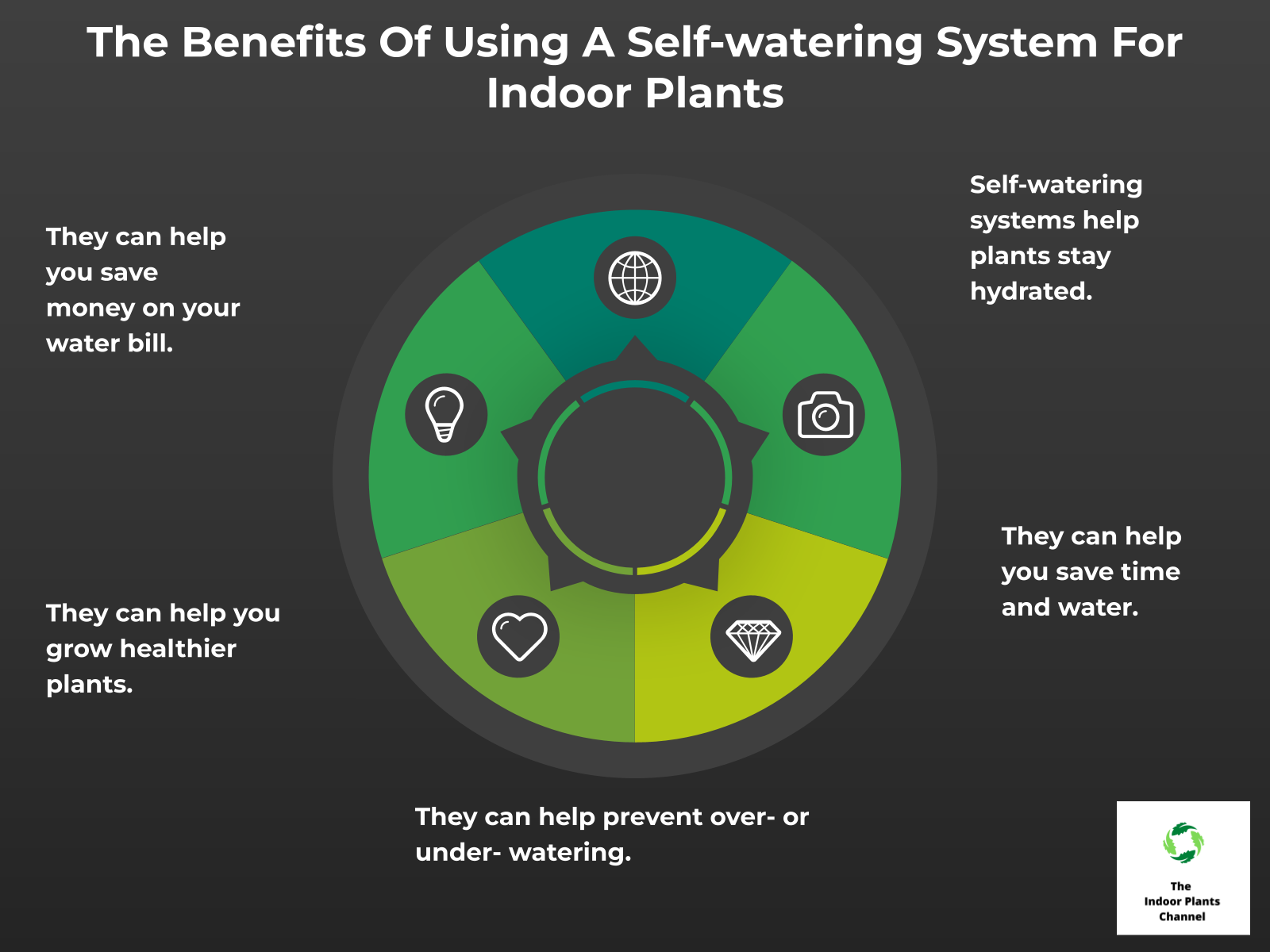
The Different Types Of Indoor Plant Pots
There are many different types of indoor plant pots to choose from. Some are made of different materials, some are different shapes and sizes, and some have different drainage systems.
Here are some of the most popular types of indoor plant pots:
- Terra cotta pots – These pots are made of fired clay and are one of the most popular choices for indoor plants. They are porous, which means they help to keep the roots of your plants aerated. Terra cotta pots come in a variety of sizes and shapes.
- Plastic pots – Plastic pots are a popular choice because they are lightweight and inexpensive. They come in a variety of colors and sizes, and some have drainage holes in the bottom.
- Ceramic pots – Ceramic pots are another popular choice for indoor plants. They are made of fired clay and are available in a variety of colors and sizes. Like terra cotta pots, they are porous and help to keep the roots of your plants aerated.
- Bamboo pots – Bamboo pots are a stylish choice for indoor plants. They are made of natural bamboo and are available in a variety of sizes. Bamboo pots are lightweight and have good drainage.
- Wooden pots – Wooden pots are a classic choice for indoor plants. They are available in a variety of sizes and styles, and can be made of different types of wood, such as cedar, pine, or oak. Wooden pots are durable and have good drainage.
When choosing an indoor plant pot, there are a few things to keep in mind.
- Consider the size of the pot. It should be big enough to accommodate the roots of your plant, but not so big that the plant is pot-bound.
- Consider the material of the pot. Some materials, such as terra cotta, are more porous than others and will need to be watered more frequently.
- Consider the drainage system of the pot. Some pots have drainage holes in the bottom, while others do not.
- Consider the style of the pot. There are many different styles to choose from, so choose one that fits your décor.
The Best Fertilizers For Indoor Plants
When it comes to indoor plants, fertilizer is an important factor in keeping them healthy and vibrant. However, not all fertilizers are created equal. There are many different types and brands of fertilizer on the market, so it can be tricky to know which one to choose for your plants.
Here are some tips to help you choose the best fertilizer for indoor plants:
- Read the labels carefully.
- Choose a fertilizer based on your plant’s needs.
When purchasing fertilizer, be sure to read the label carefully. The label will tell you what nutrients the fertilizer contains and the recommended application rate.
Different plants have different fertilizer requirements. For example, some plants need more nitrogen for healthy growth, while others need more phosphorus for blooming. Be sure to choose a fertilizer that contains the right mix of nutrients for your particular plant.
- Follow the directions.
It is important to follow the directions on the fertilizer label. Applying too much fertilizer can damage your plants, so it is important to use the right amount.
- Be aware of the danger of chemical fertilizers.
Chemical fertilizers can be harmful to both your plants and the environment. If possible, choose an organic fertilizer instead.
- Ask for help.
If you are unsure which fertilizer to choose for your plants, ask for help from a knowledgeable gardening friend or the staff at your local nursery.
By following these tips, you can be sure to choose the best fertilizer for your indoor plants.
Conclusion
If you’re looking for a low-maintenance plant that can thrive indoors with minimal water, there are several great options to choose from. Snake plants, succulents, and cacti are all excellent choices that are relatively easy to care for. With a little research, you can find the perfect plant to suit your home and lifestyle.
Michelle Wilde
Related posts
10 Comments
Leave a Reply Cancel reply
![]()
About Michelle Wilde
Michelle Wilde is a stay-at-home mom and avid plant lover. Armed with a post-graduate degree in Computer Science (no kidding!), she loves researching plants and landscapes. When she is not caring for her 4 kids, she spends time on her passion for plants. She blogs at www.indoorplantschannel.com, the trusted source for indoor plants.
Learn more
Subscribe
* You will receive the latest posts and updates about indoor plants!
Search
Recent Posts
Categories
- Beginner Guides (10)
- FAQ (206)
- General (2)
- How-To Guides (212)
- Indoor Plants (214)
- Pest Management (2)
- Plant Problem Solutions (4)
- Seasonal Growing (2)
- Specialized Environments (2)
- Specific Plant Care (3)
- Technical Growing (2)
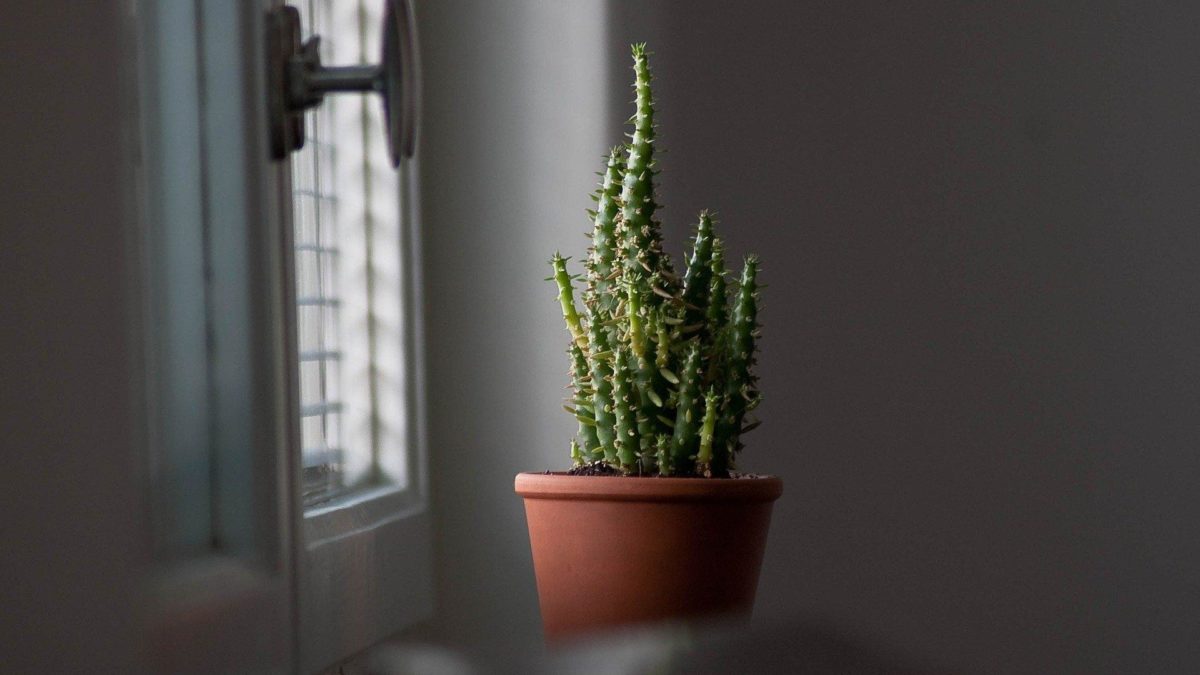
[…] low-maintenance plants to spruce up your home? Check out our list of the best indoor plants that require little water and […]
[…] They require less water and fertilizer than fast-growing plants. […]
[…] plant is easy to care for and requires little maintenance. There are different types of white house plants for the home. Here are our top 10 white house […]
[…] Cacti are well-known for their ability to store water, making them ideal for drought-prone areas. They are also very easy to care for and require very little water. […]
[…] this blog post, we’ll tell you everything you need to know about watering your indoor plants, including how often you should do it and what signs to look for if your plant is […]
[…] you have large indoor plants, you may be wondering how to water them without making a […]
[…] plants are one of the most popular houseplants around, and it’s no wonder why! They require low maintenance, they look great, and they can help […]
[…] They are also very easy to care for and require very little maintenance. […]
[…] having to worry about taking care of a delicate plant. These plants are easy to care for and only require minimal watering. They are also very tolerant of low light conditions, making them ideal for rooms that don’t […]
[…] houseplants are incredibly low-maintenance, making them perfect for busy households. They require little water and can thrive with minimal care, so you can enjoy their beauty without having to worry about […]